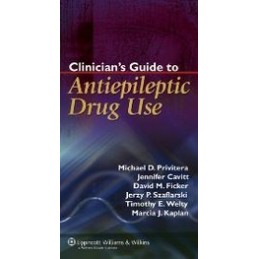- Reduced price

Order to parcel locker

easy pay


 Delivery policy
Delivery policy
Choose Paczkomat Inpost, Orlen Paczka, DHL, DPD or Poczta Polska. Click for more details
 Security policy
Security policy
Pay with a quick bank transfer, payment card or cash on delivery. Click for more details
 Return policy
Return policy
If you are a consumer, you can return the goods within 14 days. Click for more details
Designed for quick point-of-care reference, this handbook offers evidence-based guidelines on use of antiepileptic drugs for seizures, psychiatric disorders, pain, and headache. Chapters cover all drugs, including the recently approved drug pregabalin. For each drug, the authors list FDA-approved indications and summarize the evidence for efficacy and tolerability from clinical trials for epileptic, psychiatric, pain, and headache indications. Also included are recommendations from professional societies such as the American Academy of Neurology, American Psychiatric Association, and Association for the Study of Headache. Tables in the final chapter summarize these recommendations and indicate the authors choice of drug in various clinical situations.
Data sheet
Introduction
Michael D. Privitera
Carbamazepine
Timothy E. Welty
Felbamate
Michael D. Privitera
Gabapentin, Neurontin
Jennifer Cavitt
Lamotrigine
David M. Ficker
Levetiracetam
Jennifer Cavitt
Oxcarbazepine
Jerzy P. Szaflarski
Phenobarbital, Primidone (Mysoline)
Timothy E. Welty
Phenytoin
Michael D. Privitera
Pregabalin
Timothy E. Welty
Tiagabine
Jennifer Cavitt
Topiramate
Michael D. Privitera
Valproate
David M. Ficker
Zonisamide
Jerzy P. Szaflarski
Summary Tables
Michael D. Privitera
